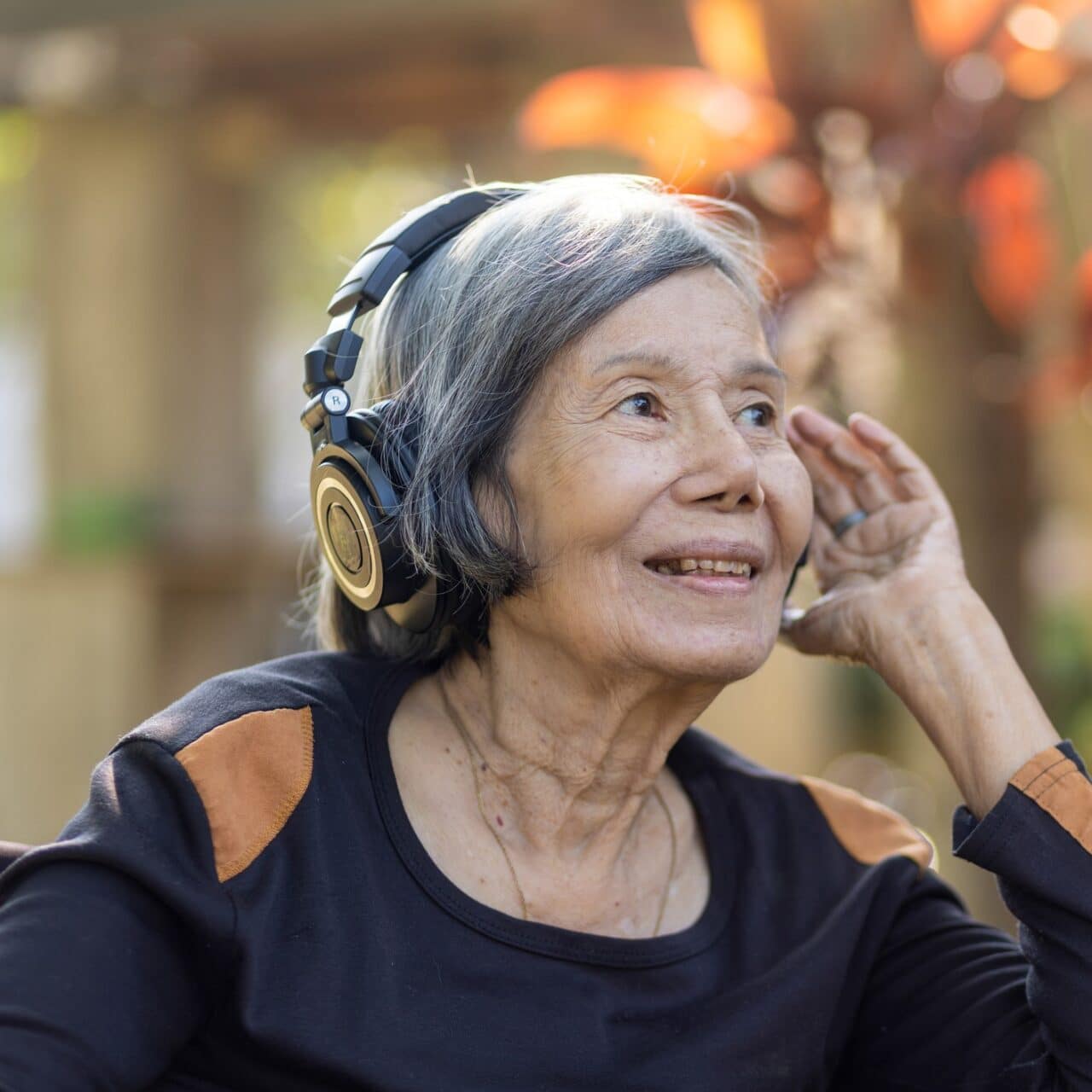According to the National Institute on Deafness and Other Communication Disorders, almost 30 million U.S. adults could benefit from hearing aids. If you’re a hearing aid user or are considering wearing hearing aids, you may be wondering how this technology will interact with the way you listen to music, podcasts, audiobooks and TV. Can you still wear headphones while wearing hearing aids?
The answer is, yes! If you want. The choice is up to you in terms of your comfort, hearing needs, hearing aid style, preferred headphone fit and your frequency of using them. It will all come down to personal preferences. So let’s discuss some of the options.

What Are the Benefits of Wearing Headphones with Hearing Aids?
- Noise cancellation is achieved if you use noise-cancelling headphones.
- Less of a drain on battery; Bluetooth® functionality, if your hearing aids have Bluetooth, will deplete your hearing aids’ battery quicker.
- There are an increasing number of headphones being developed specifically for hearing aid users. Check those out and see how they work for you.
What Are the Drawbacks to Wearing Headphones with Hearing Aids?
- Decreased sound quality. Putting sounds through two sets of microphones and speakers like that risks distortion or complete changes in the sound. The sound quality could be further distorted depending on how they’re sitting on your head.
- Chance of feedback. When headphones press against your hearing aids, they can either jostle your hearing aid, creating an opening for sound to leak out of the ear canal, or they can cause the audio signals from the headphones and the hearing aid to interfere with each other. Both of these scenarios will cause feedback.
- Comfort. This will vary from person to person, but wearing both headphones and hearing aids comfortably can be a challenge. Some headphones may not fit well with hearing aids.
Types of Headphones for Your Hearing Aid
No matter which type of hearing aid you wear and which type of headphones you’re interested in, it’s a good idea to test headphones out with your hearing aids in before you buy them to ensure comfort and sound quality. If trying them on is impossible, make sure you have a solid return policy when you buy them.
There are three main styles of headphones:
- In-ear headphones, like AirPods, are popular but present the biggest challenge with hearing aids.
- On-ear headphones, which go over the head and rest just over the ear.
- Over-ear headphones, which look like on-ear headphones but with larger ear cups that cover the whole ear. Remember: the more space between your headphones and your hearing aids, the less chance of feedback.
In-The-Ear Hearing Aids
If you wear ITE hearing aids and all the parts are completely within the ear canal, you have lots of options. You could wear on-ear and over-ear headphones with few complications, and might even be able to wear in-ear headphones.
Behind-The-Ear Hearing Aids
Choices are a little more limited for BTE hearing aid users. The larger over-ear headphones are the best fit in this case. Make sure the headphones’ speakers are far enough from the hearing aid microphone to avoid feedback.
Bluetooth and Hearing Aids
Hearing aid technology has come a long way in recent years. Now, as an alternative to using headphones over your hearing aids, you can now use Bluetooth technology to stream audio directly to your hearing aid. This alleviates many of the drawbacks to headphones: significantly less chance of feedback, better sound quality, more comfortable and more convenient since it’s already in your ear. Most new hearing aids come with this technology. Talk with your audiologist about what capabilities your hearing aid has, if it has Bluetooth, and if not, what headphones would work best for you. Call Aaron's Hearing Aid & Audiology Center for more information or to make an appointment.
